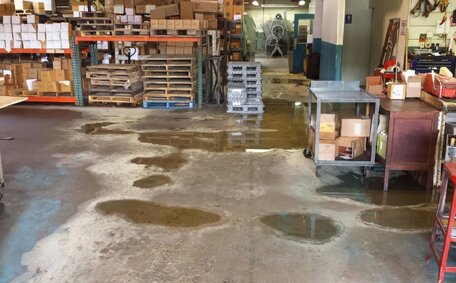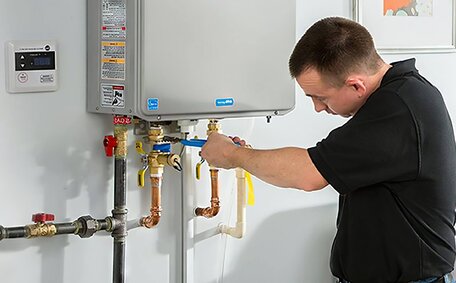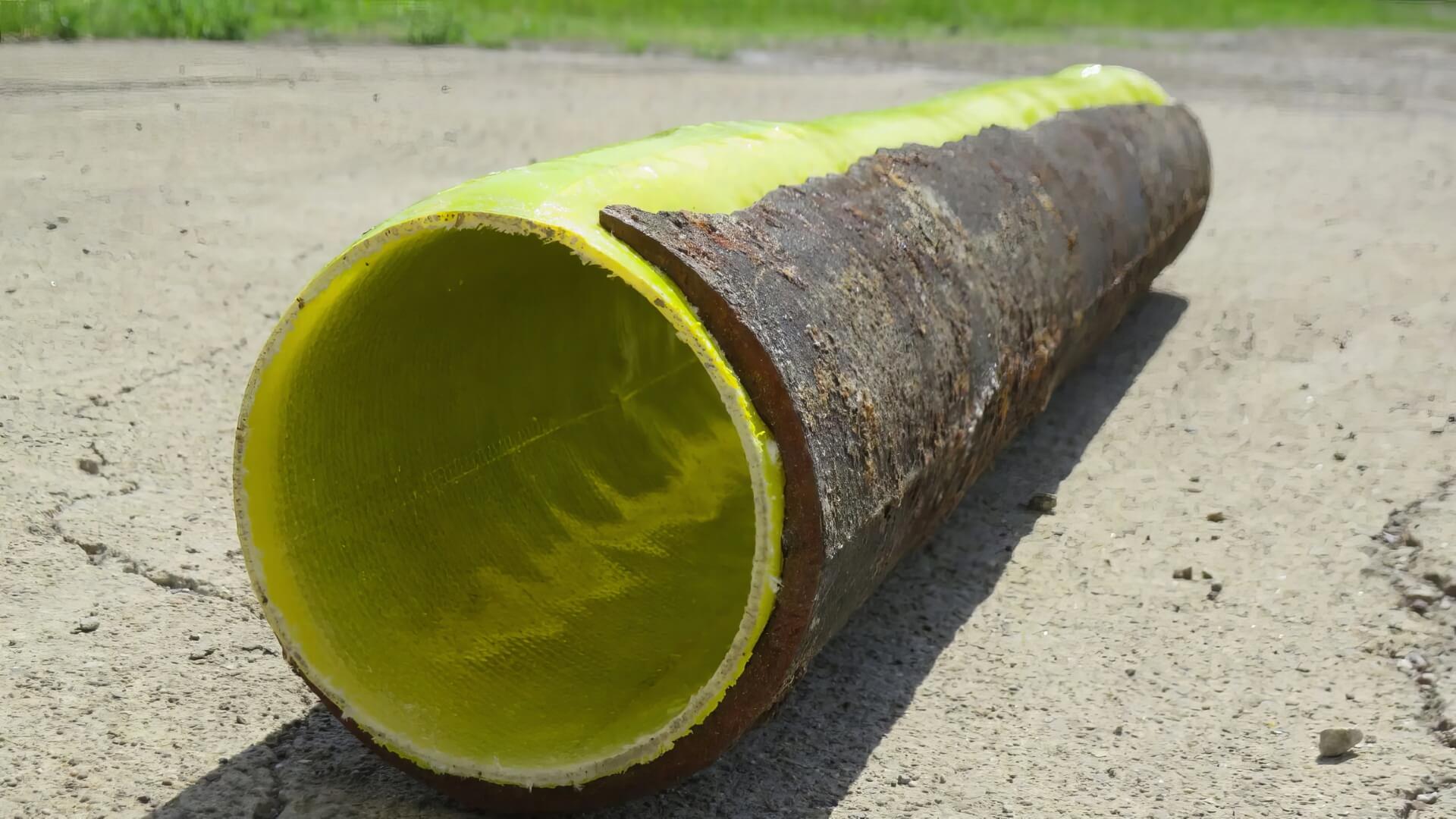
How To Fix Water Heater Issues
Can’t get hot water from your water heater? Try troubleshooting by checking the power supply, thermostat, heating elements and more. Call a pro plumber for repairs.
Read MoreDuring the winter months in Baulkham Hills, Sydney, the occurrence of frozen and bursting pipes can lead to expensive plumbing repairs and significant water damage in homes.
When temperatures drop to below freezing, water inside pipes can freeze, which may lead to pipes bursting. Understanding the causes of freezing in pipes and how to prevent it is essential to protect your plumbing from the ravages of winter.
Burst pipes, often resulting from freezing temperatures, can cause water leaks, flooding, and extensive property damage. In certain cases, the pipes in your water supply system may freeze, disrupting water flow to taps and appliances. Repairing burst pipes often necessitates emergency plumbing services, which can be costly in addition to the physical damage sustained.
Your plumbing is at risk of becoming ice-bound during winter if subjected to temperatures of 20 degrees Fahrenheit or below. At these low temperatures, water inside the pipes begins to freeze and expand, increasing the risk of ruptures and cracks.
Extended periods of freezing temps are prime conditions under which your pipes freeze burst, affecting your home’s infrastructure. Even fleeting dips below 20°F have the potential to crack pipe interiors, with ice accumulating over time. The longer pipes are exposed to freezing air, more than just ice accumulation occurs.
What do your pipes ever behave like differently in colder temps? Various types of pipes certainly do, each with its freezing thresholds. Copper or PEX water pipes may commence freezing at 20°F, while their plastic counterparts often crack at just 15°F. Galeotafiore emphasises more about how older galvanised steel pipes can withstand slightly colder temperatures of 10°F before freezing issues arise.
Regardless of pipe material, once the temperature remains at or below freezing for over 4 hours, ice blockages and ruptures become increasingly likely. Slow drips from faucets may spotlight areas within exterior walls of your plumbing system that are likely to freeze.
When you know where the temperature puts pipes at risk, it empowers homeowners to take preventative action. Check and make sure to monitor weather forecasts for prolonged sub-20°F conditions to proactively protect pipes from bursting. Undertaking simple acts like opening cabinet doors, enveloping pipes with insulation, or permitting faucets to drip allows water to drain, preventing frozen mishaps and costly plumbing repairs.
Certain areas your property are often more vulnerable, leaving your pipes frozen if not properly addressed. Knowing the vulnerable spots can help homeowners focus preventative efforts.
Spaces like crawl spaces or attics inside your home can become dangerously cold in winter. Though they may reside indoors, insufficient insulation and heating allow cold air into your cubby spaces. Any water supply lines traversing through such unheated indoor areas are precariously at risk.
Your hose servicing faucets or bibs outdoors remains highly vulnerable in frigid conditions. The constant frigid temperatures outdoors can freeze the sections of pipe leading indoors to the shutoff valve. Equipping outdoor hose bibs with insulation and heat tracing is an effective strategy to stave off freezing pipes.
Pipes distanced from the main heater, integrated into your system, can be more susceptible, due to lower residual heat. Prioritising pipe insulation and heating in these distant areas adds protection.
By understanding the weak points for freezing, preventative measures can be focused where they are needed most. Proper insulation, sealing of openings, and maintaining heat to vulnerable areas will reinforce pipes against winter’s freezing wrath.
Understanding the unique properties of water, which can freeze and expand, is key to prevent burst pipes. The phenomenon whereby water’s volume increases upon solidarity could freeze, ultimately leading to a burst in the vessels that contain it. This expansion inside pipes causes tremendous pressure that the material cannot withstand.
Comprehending how thaw pipes effectively is vital when temperatures drop and water begins to freeze. But unlike ice cubes in a tray, the frozen water has nowhere to expand except against the interior walls of the pipe. Envision the intense pressure building within the confined space as ice can forcibly expand.
Even a small section of a water pipe can cause this pressure to spike dramatically when frozen. Standard half-inch copper pipes expand by about 3% when water freezes inside. Even this marginal expansion can cause your robust pipes to endure a force comparable to hundreds of pounds per square inch.
The inflexible pipe can struggle, stretching thin like a balloon, as ice within swells and impairs its integrity. Continued freezing and expansion causes pipes to rupture at their weakest point, unleashing a flood of water.
The force of expanding ice is mighty enough to cause pipe materials like PVC and steel to fail. Even small cracks or flaws inside your walls’ material provide failure points.
In essence, pipes burst because water freezes and expands, but has no room to grow inside the confined space of plumbing. The resulting internal pressure from the ice eventually exceeds the strength of the pipe walls, leading to cracks, fractures and ruptures.
There are several warning signs that may indicate your pipes are frozen and at risk of bursting:
- Reduced water pressure from faucets and appliances
- There’s no water coming from one or multiple faucets
- Strange noises like gurgling or cracking coming from pipes
- You can see visible signs such as ice or frost on exposed pipes
- Water leaking from cracks in pipes
If you detect these symptoms, it’s time to address the pipe frozen area immediately. Try to locate the frozen section by checking where water flow stops.
Turn off water in your domicile swiftly to forestall flooding when the ice within your pipes relents or if they rupture. Before applying heat, switch off water supply to the affected pipe to mitigate potential leaks. Opening cabinet doors beneath sinks aids in permitting warm air into the space, which can potentially thaw pipes.
Call plumber for immediate professional assistance when you believe your pipes are frozen within your dwelling. A skilled plumber can use pipe de-icers and hot water jetting techniques to swiftly and safely thaw frozen pipes. Taking quick action helps minimise water damage and avoids expensive repairs down the line.
Don’t take chances with frozen pipes - the right emergency response makes all the difference in preventing severe flooding and destruction in your home.
There are several effective ways homeowners can help prevent their pipes from freezing during cold weather:
Keep the thermostat at or above 15C, even when away from home. Insulate walls and attics, and open cabinet doors to let warm air circulate around pipes.
Sealing gaps with caulk and weather-stripping helps prevent cold water into the nooks where piping may freeze. This keeps warm air in and cold drafts out. Insulate walls and ceilings.
Envelop vulnerable water conduits with insulation or apply heat tape to shield them from the biting cold with little to no insulation. Insulate pipes tanks in unheated areas like attics, crawl spaces and garages. Protect your outdoor plumbing with foam covers, especially the hose bib, to ward off the cold.
Keep running water through your pipes overnight during the frosty weather. A consistent trickle of water through pipes in your plumbing renders it less likely to freeze, maintaining flow.
Being proactive against freezing can do much to save homeowners countless plumbing headaches. Follow these steps diligently to keep pipes in working order all winter long.
Insulate walls and attics, and open cabinet when Jack Frost invites frost into your dwelling. Properly insulating vulnerable pipes provides a barrier against cold temperatures that can freeze water inside the pipes.
There are several insulation types homeowners can use:
Focus insulation on pipes in unheated areas, like attics, crawl spaces, basements and garages. Outdoor pipes and taps should also be wrapped. Choose insulation with an R-value of at least R2.5 for adequate cold protection.
Take time in fall to insulate vulnerable pipes before winter hits. This simple step adds an effective barrier against freezing and burst pipes.
Cold drafts entering the home from poorly sealed openings pose one of the greatest risks for allowing freezing air to reach pipes. Even small gaps around windows, doors, vents or openings can let in frigid outdoor air that will eventually freeze pipes within your walls.
Homeowners should inspect areas near water pipes that travel through walls and ceilings to check for drafts. Feel around openings with your hand to sense any cold air penetration. Also look for visible gaps letting in light.
Employ weather stripping, caulk, and spray foam insulation as ways how prevent cold air from entering through these openings. Keeping cold drafts out maintains warmer indoor temperatures around pipes.
Weatherstripping added around leaky doors and windows is a solid example of how to prevent cold outdoor air from infiltrating the home. Caulking gaps and cracks shuts out drafts that could freeze pipes in wall cavities. Spray foam insulation expands to completely seal openings pipes pass through.
Vigilant sealing keeps warm air in and freezing air out. Combine sealing with pipe insulation and maintaining heat to protect pipes from frigid drafts this winter.
Keeping your home’s indoor temperature consistently warm is crucial for preventing frozen pipes. Set your thermostat to at least 15C (59F) during the winter, even when away from home. If planning a vacation, have someone check and maintain the temperature daily.
Run your home’s central heating system regularly to maintain warm air circulation throughout the house. Open cabinet doors below sinks so warm air can reach concealed pipes. Consider keeping a space heater temporarily near exposed pipes to directly warm them.
This transfers heat to vulnerable pipe areas.
Ensure your heating system operates optimally before winter arrives, don’t leave your warmth to chance. Schedule professional maintenance and repairs on your boiler or furnace. Consider upgrades like insulating your attic or equipping your home with a smart thermostat for better temperature regulation.
Replace old filters to optimise efficiency.
Supplement central heat with other warming sources like heated blankets on beds, safe space heaters, or heating cables wrapped around pipes. In times of severe cold, let faucets drip overnight to maintain running water through the pipes.
Maintaining adequate indoor heating provides a vital defence against your pipes freezing. Monitor your homes temperature closely when very cold weather strikes, and take quick action at the first sign of a malfunctioning heating system. An ounce of preventative heating saves thousands in frozen pipe repairs.
Keeping your home’s indoor temperature consistently warm is crucial for preventing frozen pipes. If planning a vacation, have someone check and maintain the temperature ded pipes.
Should you fear that pipes in your household are frozen, it is crucial to thaw them safely and promptly to avoid burst pipes and water damage. Here are some methods for safely thawing pipes:
As you thaw pipes, be vigilant for any fissures to forestall a scenario where your pipes unfreeze only to burst. Protect surrounding areas from water damage as well. Thawing frozen pipes correctly done right takes patience but prevents destructive bursting.
When faced with an extensive frozen section or an elusive blockage, it’s prudent to call a plumber without delay. They have specialised thawing equipment to restore water flow quickly and safely.
Swift action at the first inkling of chill in your conduits can prevent your pipes from succumbing to grim fates like flooding and extensive water devastation.
When a pipe bursts, immediate action is crucial to stop extensive flooding and water damage in your home. If you discover a burst pipe, turn off the main water supply valve to your house right away. This is usually located near your water metre or where the main water line enters your home.
Cover the burst pipe area with towels to contain water damage as much as possible. Move any furniture or valuables away from the vicinity of the broken pipe to protect them. Our technicians will locate the rupture, shut off water to the broken section, and replace the damaged portion of pipe.
We offer emergency repairs as well as full restoration services to remedy any resulting water damage. Acting quickly and observing the terms and conditions of good plumbing practices limits the destruction caused by a burst pipe in your home. Trust Baulkham Hills Plumbing for expert emergency response anytime your plumbing springs a leak.
When a pipe bursts, immediate action is crucial to stop extensive flooding and water damage in your home.
When frozen or burst pipes strike, the best course of action is to call a professional, licenced plumber right away. The skilled experts at Baulkham Hills Plumbing are available 24/7 for em work swiftly and safely to get your water flowing again and prevent costly water damage.
Don’t risk improper DIY repairs - let our licenced pros inspect your plumbing, locate the freeze or rupture, and implement the right solution. Trust us to preserve your home, restore water supply, and avoid a frozen pipe crisis turning into a home flooding disaster.
For emergency plumbing services, burst pipe repair, or frozen pipe inspection in Baulkham Hills, call Baulkham Hills Plumbing now at 1300 349 338 or email [email protected]. Protect your home by acting quickly when pipes freeze or burst.
When frozen or burst pipes strike, the best course of action is to call a professional, licenced plumber right away. The skilled experts at Baulkham Hills Plumbing are available 24/7 for emergency frozen pipe repairs and burst pipe response throughout Baulkham Hills.
Our team of professional plumbers have the technical know-how, specialised equipment and experience needed to efficiently handle froze pipe diagnostics, pipe thawing, and replacement of damaged sections. We work swiftly and safely to get your water flowing again and prevent costly water damage.
Trust us to preserve your home, restore water supply, and avoid a frozen pipe crisis turning d furnishings for signs of water intrusion. Look for drips, damp areas, bubbling paint or drywall, warped wood and mould growth which indicate damage.
For minor damage contained to a small area, DIY repairs can also be possible. Replace water-logged drywall, clean affpect all affected areas after a burst pipe. Contact a qualified plumber like Baulkham Hills Plumbing to inspect all affected areas after a burst pipe. We also offer mould remediation and water extraction services using industry-leading equipment to dry out flooded spaces and prevent further issues. Dolk through the entire property checking ceilings, walls, floors and furnishings for signs of water intrusion.
Can’t get hot water from your water heater? Try troubleshooting by checking the power supply, thermostat, heating elements and more. Call a pro plumber for repairs.
Read MoreCloudy or milky hot water coming from your taps is generally harmless and caused by trapped air bubbles in the water. Simply running the tap for a little while will usually clear up the water. If the cloudiness persists, it could be caused by sediment buildup or issues with your pipes.
Read MorePipe relining involves inserting a tube inside damaged pipes to repair cracks and leaks without digging. This trenchless method may allow pipes and plumbing fixtures to be relocated during bathroom renovations. Contact our expert plumbers to understand if pipe relining can reposition your pipes and fixtures.
Read MoreBaulkham Hills, 2153 NSW
We will call back as soon as possible.




